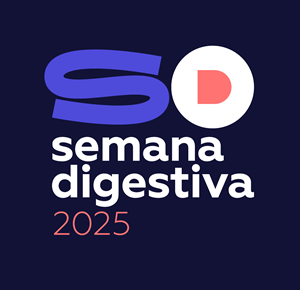Case report: A 58-year-old Caucasian man, with type 2 diabetes mellitus, arterial hypertension and dyslipidemia was admitted with a necrotizing pneumonia in the intensive care unit, where he stayed for a long period of time, with multiple infectious complications and subsequent myopathy, pressure ulcers, dysphonia and dysphagia. Thus, the patient started enteral feeding through a nasogastric tube during hospitalization, which he maintained after discharge. A month later, a 20 French percutaneous endoscopic gastrostomy (PEG) was placed, using the pull method, without complications. Simultaneously, the patient started a rehabilitation program with respiratory kinesiotherapy and speech therapy, with progressive clinical improvement. Two years later, he started oral feeding and the gastrostomy was removed. However, 2 weeks after, the patient reported drainage of gastric content through the cutaneous fistula. Upper gastrointestinal endoscopy revealed the presence of a persistent orifice at the anterior gastric wall. Argon plasma coagulation was used to denude the lining of the fistulous tract and then a 10 mm Over-The-Scope-Clip (OTSC) was placed, with effective closure of the fistulous path. However, 3 weeks after the procedure, the patient again reported drainage of gastric content through the skin. He underwent new endoscopy. On the anterior face of the body, the previously placed OTSC was observed. Methylene blue injection was performed through the external orifice with extravasation into the gastric lumen. The OTSC was then removed with the Remove DC Cutter. Another 10 mm OTSC was placed. At the end of the procedure, there was no extravasation of methylene blue to the stomach. Three months later, the patient is asymptomatic and the cutaneous orifice of the fistula was completely healed.Discussion: We show a difficult case of endoscopic closure of persistent gastrocutaneous fistulae after PEG tube removal. Successful fistula closure was possible after using two OTSCs.

 Semana Digestiva 2025 | Todos os direitos reservados
Semana Digestiva 2025 | Todos os direitos reservados